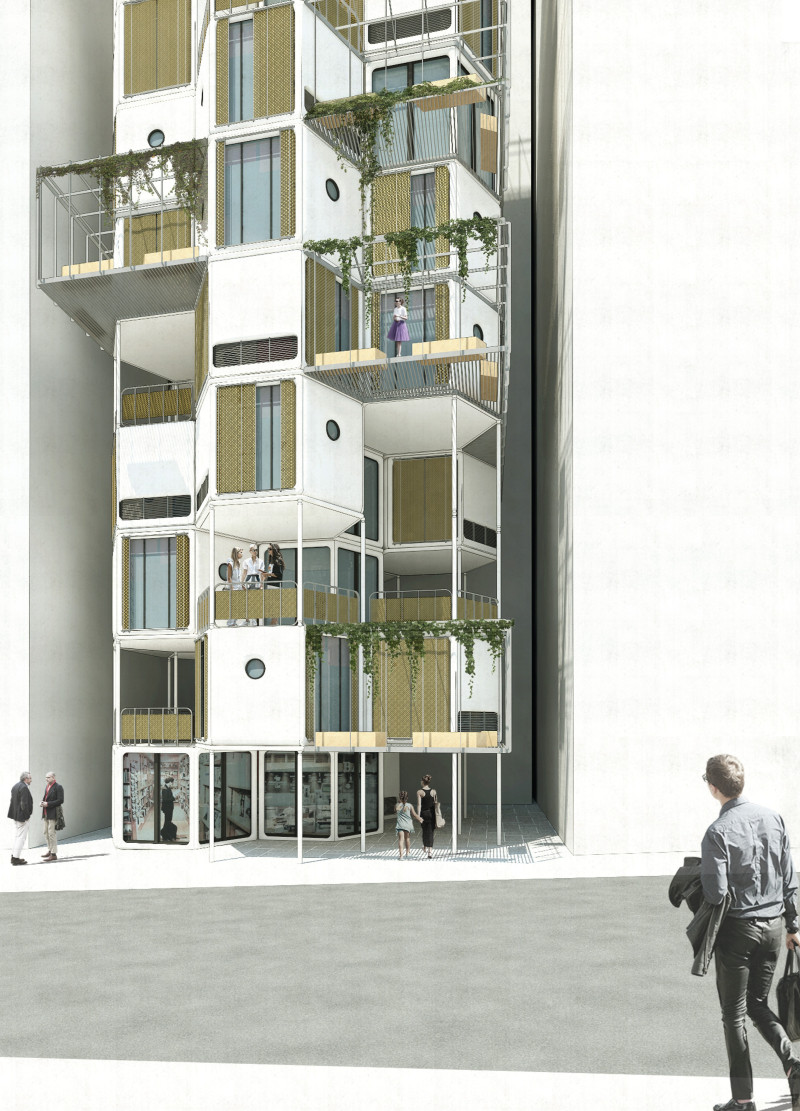5 key facts about this project
The design concept is rooted in a deep understanding of its context, reflecting the historical and cultural tapestry of the locale. By analyzing the needs of the community and the site’s specific characteristics, the project aims to serve not only as a functional space but also as a catalyst for social interaction and engagement. The architectural ambition behind this project is articulated through an open floor plan that fosters fluid movement and encourages a sense of community ownership. Each area is meticulously planned to ensure versatility, allowing for various activities that cater to a diverse user base.
Materiality plays a crucial role in the project, with a palette chosen to resonate with both the built environment and the natural landscape. The design prominently features locally sourced materials such as timber, steel, glass, and concrete. The use of timber not only provides warmth and texture but also aligns with sustainability goals, ensuring a reduced carbon footprint. Steel elements contribute to the structural integrity while offering an industrial aesthetic. The extensive use of glass invites natural light deep into the interiors, blurring the lines between indoor and outdoor spaces. Additionally, the integration of concrete surfaces reinforces a contemporary urban feel, seamlessly merging with traditional materials found in the surrounding architecture.
The project incorporates innovative design approaches that enhance its functionality and aesthetic appeal. One notable feature is the implementation of green roofs and vertical gardens, which not only contribute to biodiversity but also offer thermal insulation and stormwater management. The design embraces passive solar strategies, optimizing natural ventilation and daylighting to create comfortable interiors year-round, while minimizing energy consumption.
This architectural endeavor also prioritizes inclusivity through its design, ensuring accessibility for all users. Pathways are thoughtfully designed to accommodate various mobility needs, allowing easy navigation throughout the space. The layout promotes engagement with the surroundings, with outdoor areas designed for gathering and interaction, further solidifying the project’s role within the community.
Furthermore, the project demonstrates a commitment to longevity, with flexible spaces that can evolve over time to meet changing needs. This adaptability is a vital aspect of modern architecture, promoting resilience within the built environment. By anticipating future requirements, the design ensures that the project remains relevant and useful for generations to come.
In summary, this architectural project offers a nuanced understanding of contemporary design, seamlessly blending functionality, materiality, and context. The careful consideration given to each aspect of the project culminates in a design that is both purposeful and aesthetically pleasing. Readers are encouraged to delve deeper into the intricacies of this project by exploring architectural plans, architectural sections, and architectural ideas that reveal the thoughtful considerations underpinning the design. This exploration will provide further insights into how the project exemplifies contemporary architecture in its most effective form.


























